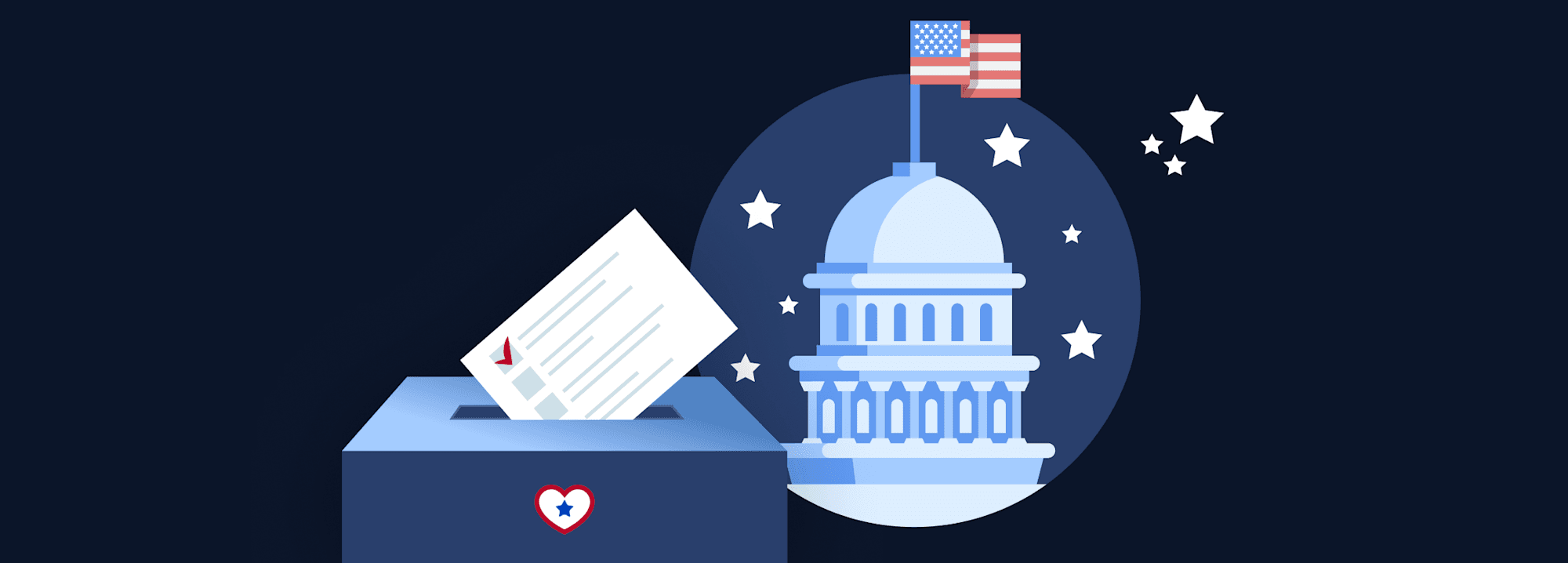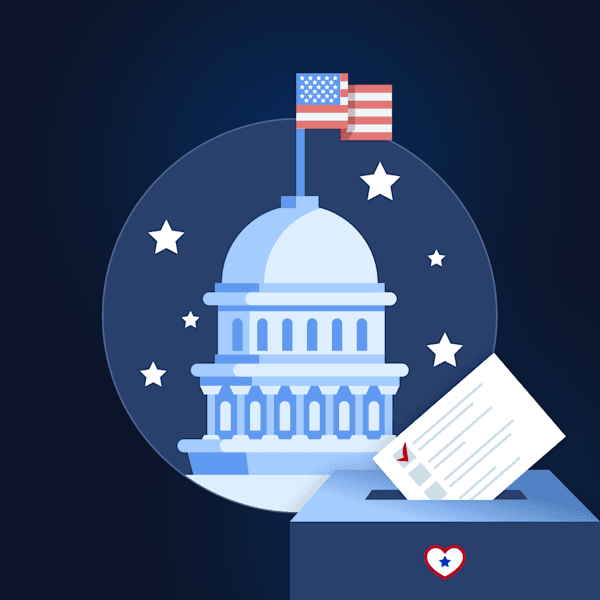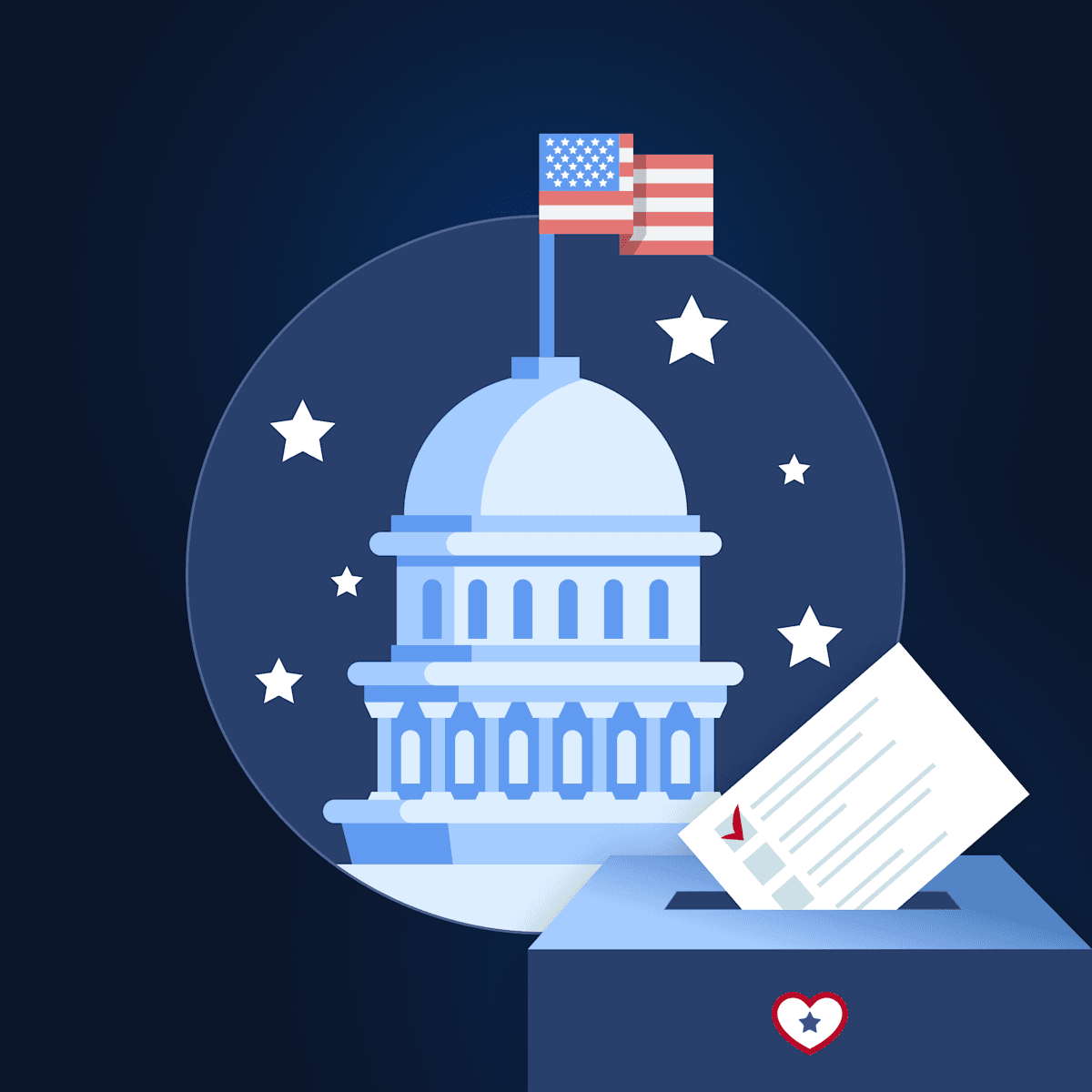
Politics 101: A Beginner’s Guide to Government and Civic Action
Politics isn’t just for politicians, political science majors, or people glued to cable news. It’s for anyone who cares about their community, their future, and the decisions shaping both. Whether you’re frustrated with the current system, gearing up to vote for the first time, or just trying to make sense of how it all works, this guide is for you.
We’ll walk you through what politics really means, how government works, what political parties do, and how you can get involved (even if you’re not running for office). This isn’t about memorizing terms. It’s about empowering you with the knowledge to make change happen.
Why Learn Politics in the First Place?
Politics affects nearly every part of our daily lives: what taxes we pay, which schools get funded, what rights are protected, and who makes decisions on our behalf. Too often, people feel shut out. In a 2024 Pew Research Center survey, only 22% of Americans said they trust the federal government to do what’s right most of the time. Civic education is how we close the gap between frustration and action. When we understand the system, we can push it to work better for everyone.
What Is Politics, Really?
At its core, politics is about power — who has it, how it’s used, and who benefits. It’s also about priorities, problem-solving, and participation. Politics is the process we use to decide how we live together, allocate resources, and respond to challenges.
Politics is not limited to Washington, D.C. It happens in school board meetings, town halls, and neighborhood organizing.
Some people say they “don’t care for political things,” and you may even be one of them, but ultimately, everything is inherently political:
Politics determined the building codes and zoning restrictions that required your house to be built in a certain place and a certain way.
Politics chose what countries we trade with and where we get resources to make the clothing you’re wearing.
Politics decided the regulations around the food you’re able to buy and consume.
Politics even chose what you learned about politics in school.
You can also have a say in all the aspects of day-to-day life that politics influences. And, you don’t need a degree or a political title to participate. You just need to care and be willing to learn.
Key Concepts to Know
Understanding a few basic terms can go a long way. Here’s a quick political glossary to get started:
Democracy: A system where power comes from the people, typically through voting.
Republic: A form of representative democracy where we elect officials to make decisions for us.
Constitution: The foundational document that outlines how our government functions.
Federalism: A system where power is shared between national and state governments.
Separation of Powers: The division of responsibilities across three branches to avoid too much power in one place.
These basics help unlock the rest of the political system. With this foundation, you're ready to explore how government actually functions and where you can get involved.
LEARN MORE: Explore more political terms in our glossary of terms related to politics and elections.
A Brief History of Politics in America
To understand where we are today, it helps to know where we’ve been. American politics has evolved over centuries, shaped by both high ideals and hard-fought struggles.
Let’s look at some of the pivotal moments that have shaped American politics:
The Birth of the Constitution
In 1787, delegates gathered in Philadelphia to draft a new constitution for the young United States. They created a system of government based on checks and balances, federalism, and the idea that power should rest with the people.
However, not everyone had a voice. Early politics largely excluded women, Black Americans, Indigenous people, and non-landowners. Expanding access has been a slow, uneven process.
Expanding the Right to Vote
Voting is one of the most fundamental rights in a democracy, but it hasn’t always been accessible to everyone.
When the U.S. Constitution was ratified, the right to vote was mostly limited to white, land-owning men. Over the centuries, voting rights expanded through hard-won amendments and movements:
The 15th Amendment (1870) granted voting rights regardless of race. However, discriminatory practices like poll taxes, literacy tests, and intimidation continued for decades, especially in the South.
The 19th Amendment (1920) gave women the right to vote nationwide after generations of suffrage activism.
The Voting Rights Act of 1965 prohibited racial discrimination in voting and required certain states to get federal approval before changing election laws.
The 26th Amendment (1971) lowered the voting age to 18 in response to youth activism during the Vietnam War era.
Each of these milestones represented a step toward a more inclusive democracy, but the fight for fair access to the ballot isn’t over.
Modern Voting Challenges
In recent years, new barriers have emerged. Some states have passed laws that:
Reduce early voting windows
Limit vote-by-mail access
Require specific types of photo ID that may be harder for some voters to obtain
Close polling places in historically underrepresented communities
Purge voter rolls more aggressively
At the same time, recent court decisions like the 2013 Shelby County v. Holder ruling struck down key parts of the Voting Rights Act, allowing some jurisdictions to change voting laws without federal oversight.
These changes have sparked national debate about voter suppression, election integrity, and how to balance security with accessibility. In some places, it’s harder to vote today than it was a decade ago.
That’s why understanding your rights, checking your voter registration, and staying informed about local election rules are more important than ever.
LEARN MORE: Learn how the establishment disenfranchises voters to fight back more effectively.
The Rise of Political Polarization
Over the past few decades, U.S. politics has grown more divided. Cable news, social media, gerrymandering, and dark money have all played a role in deepening partisanship and limiting collaboration.
Despite that, local and Independent movements continue to rise. Voter frustration with the two-party system has sparked a wave of new candidates, new parties, and renewed calls for reform.
Politics in America is far from perfect, but it’s not static. Every generation has the chance to shape what comes next.
LEARN MORE: Get a deeper understanding of political polarization in the United States.
How the U.S. Government Works
The U.S. government is made up of three co-equal branches, each with specific powers and responsibilities:
Executive Branch: Led by the president, this branch enforces laws, oversees foreign policy, and manages federal agencies.
Legislative Branch: Congress (the House and Senate) writes and passes laws.
Judicial Branch: The courts interpret laws and determine whether they’re constitutional.
Each branch is designed to check the others and keep our democracy balanced. That system isn’t perfect, but it’s built to be participatory, if we use it.
Political Parties: How They Shape the Political Landscape
Political parties are a big part of how the U.S. political system operates. They organize ideas, mobilize voters, and help candidates run for office. While parties play a major role in shaping government, they don’t define every voter or every candidate.
What Do Political Parties Do?
Parties are like teams that unite people around shared values and policy goals. They:
Recruit and support candidates
Fundraise and run campaign operations
Write party platforms that outline their priorities
Mobilize voters through advertising, canvassing, and events
Influence legislation by building voting blocs in Congress and state legislatures
While many Americans think of politics in terms of "red vs. blue," the reality is more complex and fluid than the headlines suggest.
Political parties may help structure elections and organize campaigns, but they’re not the same as political ideologies. Ideologies are broader belief systems, like conservatism, progressivism, or libertarianism, that shape how people think about government, policy, and society. Many voters may share ideological values without aligning with a specific party.
LEARN MORE: Find out why the United States has a two-party system.
The Two Major Parties
The United States has two dominant parties:
Democratic Party: Often associated with progressive or liberal policies, Democrats generally support a more active role for government in areas like social welfare, civil rights, and environmental protection.
Republican Party: Typically aligned with conservative values, Republicans often advocate for lower taxes, limited government intervention, and traditional social policies.
These generalizations don’t capture the values of every Democrat or Republican, but they offer a basic framework for understanding national debates. Both parties are broad coalitions with internal disagreements and evolving priorities.
LEARN MORE: Explore the differences between Democrats vs. Republicans.
While the two major parties often dominate headlines, the ideological spectrum among voters is much broader. Many Americans find their beliefs don’t align perfectly with either party, which is part of why so many now identify as Independents.
Independents and Third Parties
More Americans are choosing not to affiliate with either major party. Gallup polling shows that 43% of U.S. adults identify as political independents, which is more than either Democrats or Republicans.
Some voters lean toward a major party but reject the label of “Democrat” or “Republican.” Others support third parties, like:
Libertarian Party: Focused on personal freedom, limited government, and non-interventionist foreign policy.
Green Party: Emphasizes environmental sustainability, social justice, and grassroots democracy.
Constitution Party: Advocates for a return to what it sees as the original intent of the U.S. Constitution.
Third-party and Independent candidates at all levels of government face significant hurdles, like limited media coverage, restrictive ballot access laws, and exclusion from televised debates. However, they play a crucial role in expanding the political conversation.
At the local level, non-partisan or Independent candidates can win elections by building trust directly with voters without the backing of a major party machine.
LEARN MORE: Check out five examples of third parties in the United States.
The Rise of People-Powered Politics
The growing number of unaffiliated voters signals a shift. Many Americans are tired of hyper-partisanship, political gridlock, and a sense that party loyalty matters more than real solutions. This has fueled interest in electoral reforms like ranked choice voting, open primaries, and publicly funded campaigns.
It’s also created space for people-powered movements that focus less on party identity and more on community impact, policy innovation, and authentic leadership.
Elections and Voting: What You Need to Know
Voting is the most direct way we influence who gets to lead and what laws are made. Here’s a quick breakdown of how elections work:
Primaries: In primary elections, voters choose each party’s nominee for the general election. Some are open to all voters; others are only open to registered party members.
General Elections: Voters make the final decision about who takes office. General elections are usually between candidates from different parties (plus Independents).
Special Elections: These are unscheduled elections that occur when an office becomes vacant before the end of a politician’s term, due to reasons like resignation or death.
Presidential elections use the Electoral College system. Local and state elections vary widely, but they often have the biggest impact on your day-to-day life, so don’t skip them.
LEARN MORE: See the differences between primary and general elections.
The Electoral College
In the Electoral College system, each state is allocated a number of electors equal to its total number of Senators and Representatives in Congress. There are 538 electors in total, and a majority of 270 electoral votes is required to win the presidency.
Most states use a winner-takes-all approach, awarding all electoral votes to the candidate who wins the state's popular vote. However, Maine and Nebraska allocate their electoral votes proportionally, based on congressional district outcomes.
Voter Turnout Trends
Voter turnout varies significantly between federal and local elections. For instance, the 2024 general election saw a turnout of 63.7% of eligible voters. While lower than the 66.6% turnout in 2020, this was still higher than any other election since 2004.
In contrast, local elections often experience much lower participation rates, often below 20%. Factors contributing to this include lack of awareness, the perceived insignificance of local offices, and scheduling of elections at off-peak times.
Voting Methods
Voting methods have evolved to increase accessibility and convenience. In most states, you can vote:
In Person: In-person voting is the traditional method where voters cast ballots at designated polling places on election day.
Early: Early voting allows voters to cast ballots before election day during a specified period.
Absentee or By Mail: Submitting ballots by mail is often used by those unable to vote in person.
It's important to note that voting laws and procedures can vary by state, including deadlines, identification requirements, and options for early or mail-in voting.
LEARN MORE: Understand the different types of voting systems in America.
Busting Common Myths About Politics
A lot of people avoid politics because of what they’ve been told or what they assume. Let’s clear up a few common misconceptions:
Myth #1: “Politics Doesn’t Affect Me.”
If you drive on roads, attend public school, pay taxes, drink water, or breathe, you’re affected by politics. It shapes everything from the price of groceries to the safety of your community.
Myth #2: “My Vote Doesn’t Matter.”
Especially in local and state races, a small number of votes can decide who wins an election. In some school board and city council elections, a difference of just a few dozen votes determines who leads. Your vote matters much more than you think.
Myth #3: “I’m Not Political.”
You don’t need to follow every headline or attend every meeting to care about your future. Politics isn’t about partisanship. It’s about people. If you care about housing, health care, education, or the environment, you’re already political.
Myth #4: “You Have to Be an Expert to Get Involved.”
You don’t need a degree in political science to ask a question at a town hall, write a letter to your representative, or support a candidate who shares your values. Democracy works best when everyone participates, not just the professionals.
By challenging these myths, we open the door to more inclusive, people-powered politics. The more we learn, the more confident we become, and the more change we can create.
How to Learn More About Politics
Learning politics doesn’t require a textbook or classroom. It just takes curiosity.
Here’s how to start:
#1: Follow Trusted News Sources
Look for reputable, non-partisan outlets. Mix perspectives to avoid echo chambers and understand multiple sides of the issues.
#2: Decode the Vocabulary
If a word or concept is confusing, look it up. Knowing the language makes it easier to follow debates and decisions.
#3: Talk About It
Ask questions. Share articles. Join a town hall. You don’t have to have all the answers. Just be willing to learn out loud.
#4: Start Local
Show up to a city council or school board meeting. Reach out to your local reps. Politics is happening in your backyard.
#5: Explore Free Resources
GoodParty.org offers guides, tools, and articles to help you understand elections, campaigns, and how to take action.
How to Get Involved in Politics (Without Running for Office)
You don’t have to run for office to participate in politics. Some ways you can engage right now include:
Volunteer for a campaign or community initiative
Attend public meetings like town halls
Organize or join a voter registration drive
Write or call your elected officials about issues that matter to you
Support Independent candidates who align with your values
Even small actions add up. Especially in local races, a few committed people can shape the outcome of elections.
LEARN MORE: Get involved in local politics today with these eight easy strategies.
Turn Knowledge Into Power
Understanding politics is just the first step. Showing up is where the real impact begins.
Whether you’re casting your first vote, helping a neighbor register, or sitting in on a local budget meeting, your presence matters. Democracy isn’t something we watch from a distance. It’s something we build, decision by decision, person by person, one action at a time.
If you’re frustrated by the system, you’re not alone. Frustration can turn into fuel: fuel for learning, for leading, and for doing things differently. Every step you take toward engagement, no matter how small, helps push politics back into the hands of the people.
At GoodParty.org, we believe that power doesn’t just belong to parties or politicians. It belongs to you. We’re here to help you take that power and use it to make a difference.
Let’s make politics something we all participate in, not just something we endure. Together, we can build a system that works for everyone.
Sign up today to get the support and resources you need to understand the system and make an impact — no experience required.

